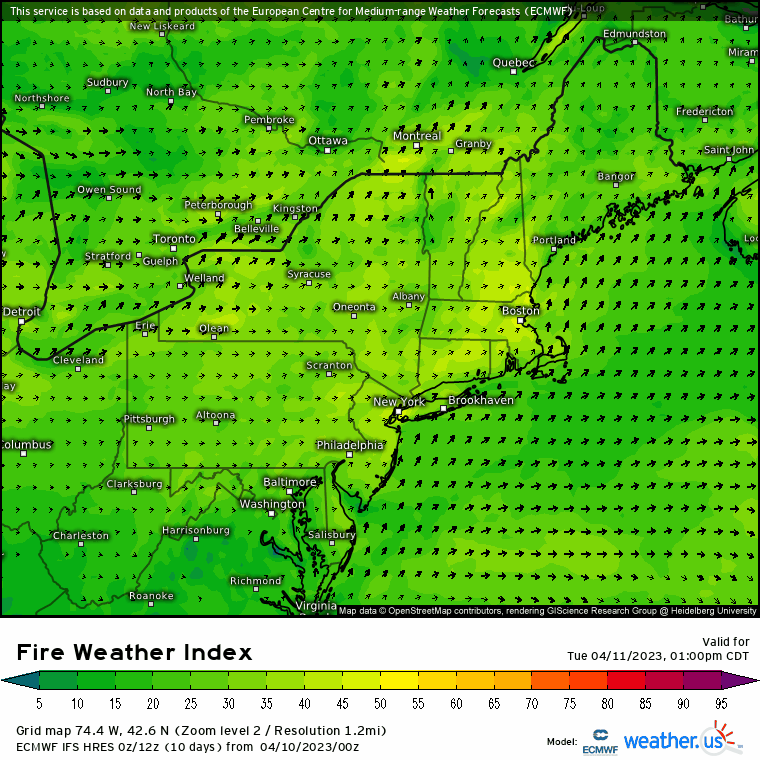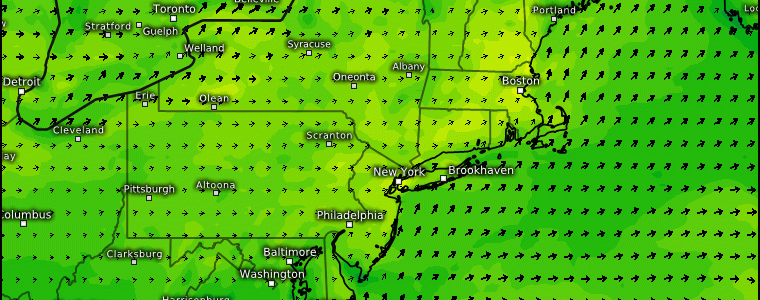
Fire Weather Risk in The Northeast?
Don’t let the expansive high pressure fool ya across the Northeast; indeed it’s going to supply glorious weather conditions with well above average temperatures and sunshine, however, atmospheric conditions will become nearly ideal in terms of fire hazards (i.e. brush fires).
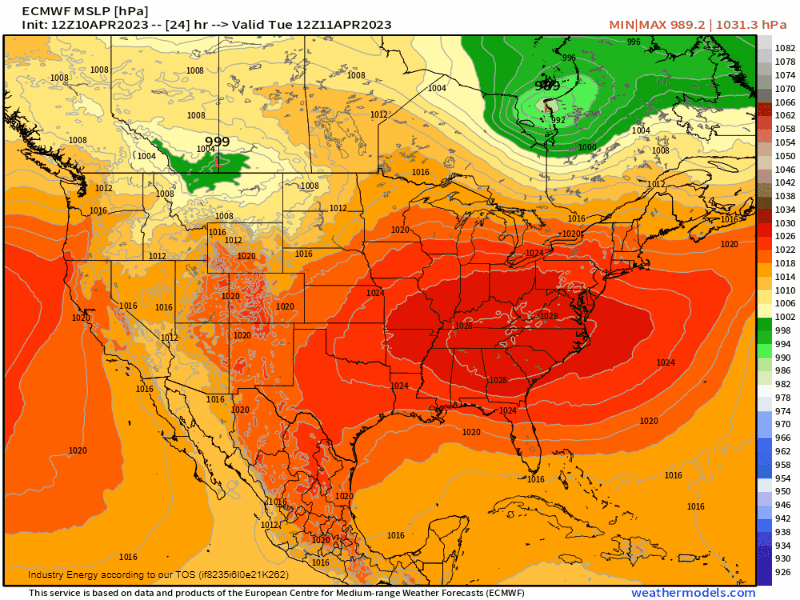
The Setup:
There are several key ingredients to look for when dealing with fire risk becoming elevated – Dryness, Moisture, Winds, and Temperatures.
- Dryness: A few days of no rain leading up to a stretch of dry of weather.
- Moisture: Low relative humidity (low dewpoints with < 30% RH is a good rule of thumb, and not exceeding 65-70% at night)
- Winds: Sustained winds of least 10 mph with gusts up to 20 mph, and obviously becomes more favorable with higher gusts.
- Temperatures: Generally want to above average.
Below, we start off with winds. We see sustained winds mostly 6-8+ mph, with a more widespread swath of 10+ mph with gusts easily surpassing 15-20 mph for several days into Friday.
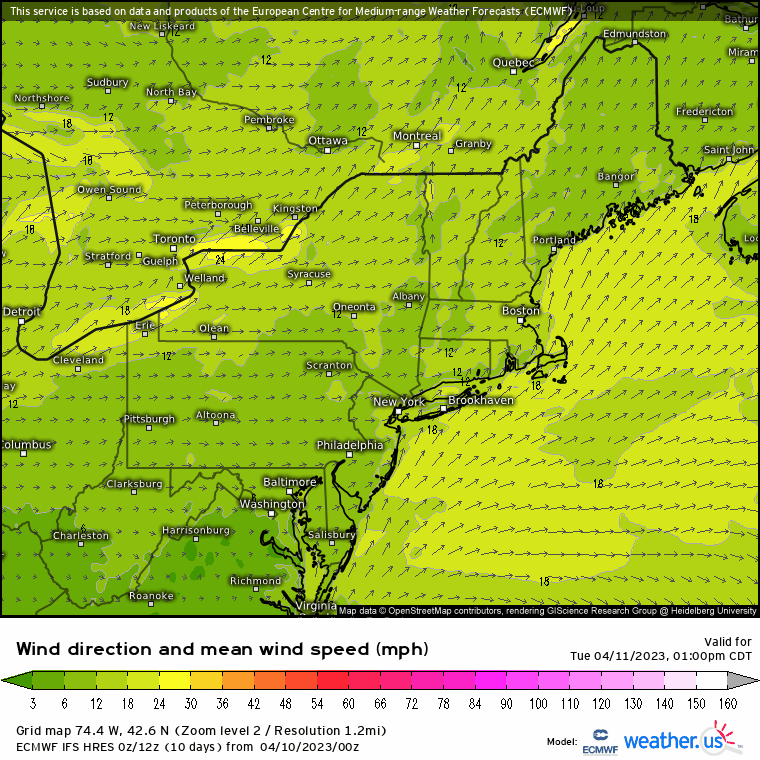
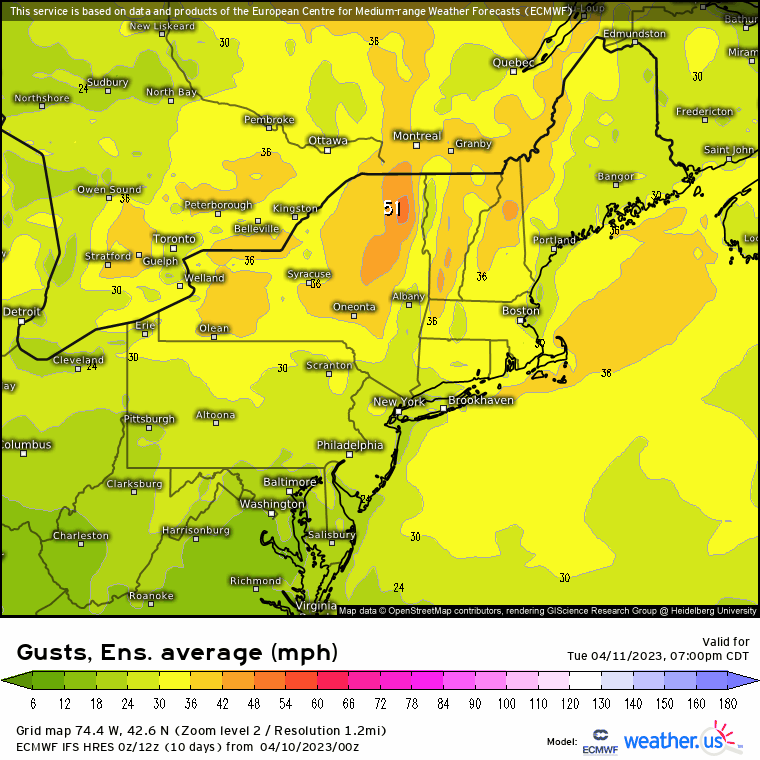
With plenty of high pressure, and again we’ve not seen rain in this general area since last Thursday so we also have the dryness aspect to this. We also are going to string several days here where the RH is quite low, where a good majority of states across the Northeast are below 40% during the day, with values not exceeding 70% at night mostly across the Mid-Atlantic states.
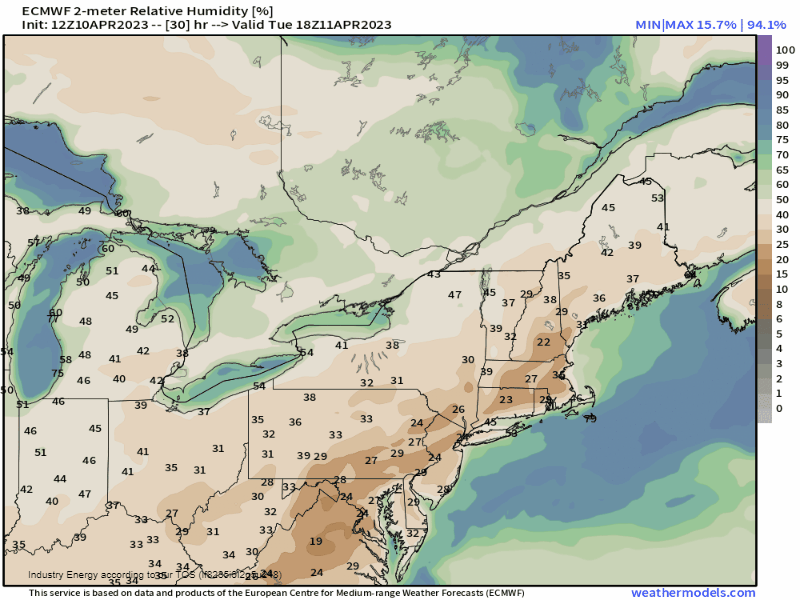
Furthermore, this time of year (April-May) for this general region is from a climatological standpoint the most favored, and it’s no coincidence that it’s coincides with the fact that trees also are not fully leafed out yet. The implications? Increased evapotranspiration and the sun’s solar radiation goes into drying vegetation much faster since there’s no shade.
So when we combine favorable atmospheric ingredients (high pressure leading into, and during ; warm temperatures ; low RH ; and winds), we get a setup conducive for brush fires and wildfires as well. The unfortunate aspect of all of this regarding fires is that nearly 85% of humans are the catalyst for fires, so any outdoor activities (i.e. camping, cigarette butts, equipment use, barbequing, etc.) can easily become the “spark” (no pun-intended) for an accidental fire to manifest. At least for the next two-three days, just exercise caution in this region as it’s during this timeframe that we’ll see the most optimal window according to the fire weather index. Using this index, anything over 50 is an indication for favorable atmospheric conditions, which as shown above, verifies this as credible.
